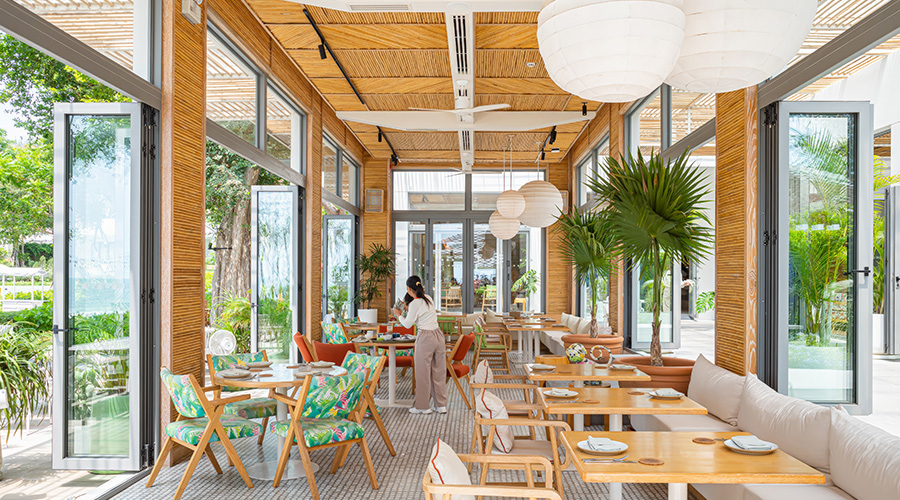
Comcast Equips Boot Road Campus with AI-Powered Solutions for Energy Efficiency
The Boot Road campus, which is home to data centers and other operations, was in need of a solution for managing its energy consumption. November 1, 2024
Comcast’s Boot Road campus in West Chester, Pennsylvania, houses data centers, engineering departments and back-office operations – all significant energy consumers. Data centers are notorious for this power demand, but even engineering and office spaces contribute heavily with servers, lights, computers and printers often running constantly.
Buildings account for a whopping 37 percent of energy and process-related greenhouse gas emissions. In fact, the U.S. Environmental Protection Agency estimates that the average commercial building wastes a staggering one-third of the energy it consumes. To help advance sustainability and cost-reduction, building managers are under pressure to become more energy efficient.
Comcast's Boot Road Campus Gets Real-Time Insights with Smart Tech
Determined to reduce carbon emissions and improve efficiency at the Boot Road facility, Comcast director of facilities and workplace, Billy Osborne, looked inward to Comcast Smart Solutions (CSS) for a creative approach. CSS is a division of Comcast that specializes in cutting-edge smart technology solutions, including video analytics, digital signage, smart mobility, smart lighting and building automation for businesses, multifamily properties, campuses, universities and even municipalities.
Together, the Boot Road facilities team and Comcast Smart Solutions implemented a comprehensive Smart Buildings plan across the three-building campus. This included AI-powered smart energy management technology, designed to optimize energy use, manage costs, provide real-time alerts and help reduce waste.
Comcast Smart Solutions began by meeting with the Boot Road facilities team to discuss their goals for the campus. The priorities were clear: they wanted real-time insights into energy usage to be able to make more informed decisions, but they also wanted to demonstrate the project’s contribution to Comcast’s broader sustainability efforts.
Following this discussion, Comcast Smart Solutions brought in Logical Buildings, a leading energy monitoring provider, to conduct a comprehensive energy audit of the Boot Road facilities. This audit assessed the campus' infrastructure and identified potential areas for improvement, enabling final smart technology solutions that align with the desired level of detail on energy use.
SmartKit AI: Real-Time Insights Power Up Boot Road's Efficiency
After the thorough assessment, Comcast Smart Solutions and Logical Buildings chose SmartKit AI, a comprehensive platform for Real-Time Energy Management (RTEM), to help transform the Boot Road campus. SmartKit AI delivers a comprehensive look at building conditions, including:
- HVAC control: Optimizes heating and cooling systems, providing HVAC setpoint recommendations enabling peak efficiency.
- Preventative maintenance: Provides alerts when problems are detected, to help reduce downtime and manage costs.
- Energy anomaly detection: Identifies unusual energy usage patterns to help pinpoint potential issues.
- Cost management: Adjusts HVAC set-points, enabling lower peak demand costs and compares energy usage to a forecast to help better manage costs.
These capabilities aligned closely with Osborne's objectives for enhancing efficiency and optimizing operations at Boot Road.
"Data isn't just information—it's the bedrock for understanding building health and efficiency," Osborne says. “SmartKit AI provides real-time information, which helps us take the guesswork out of decision-making. It gives us actionable insights to inform and update our operational strategies."
SmartKit AI goes beyond basic monitoring. It uses predictive analytics to empower building managers like Osborne to optimize their properties. The platform analyzes data from energy use, air quality, and leak detection to identify conservation and cost-saving opportunities. It also offers:
- Visualizations: Easily understand energy consumption patterns.
- Real-time meter monitoring: A current view of electricity usage and patterns.
- IoT sensor management: Manage and monitor building health sensors seamlessly.
"Building data can be a nightmare," Osborne says. "Every facility is unique, and traditional methods like wired sensors can't provide the level of detail we need. SmartKit AI simplifies data access, giving us complete oversight and control over our budget across the entire campus."
Boot Road Transforms with Smart Technology
After the team worked together to finalize the solutions design and order the hardware, a Boot Road internal electrical contractor promptly installed the sensors across the campus. The design included over 150 wireless Current Transformers (CTs) to monitor energy consumption; MachineQ, a Comcast company, provided LoRaWAN gateways to power the solutions with secure and reliable IoT network connectivity, along with indoor air quality sensors and Mqflex multi-sensors to monitor and detect leaks. This hardware, coupled with the Logical Building’s comprehensive SmartKit AI platform, delivers granular data on sources of high energy use within the buildings.
The solutions not only met the facilities team’s initial goal of better visibility, but also paved the way for cost savings and more sustainable outcomes through AI-powered insights. As an added bonus, the real time leak alerts gave Osborne and his team peace of mind.
Following the installation, Comcast Smart Solutions enabled a smooth transition by working with the Logical Buildings team to train the on-site staff on the SmartKit AI platform. This training covered how to use the platform's dashboards and mobile app for streamlined building management. With this training and ongoing support from Comcast Smart Solutions, Osborne and his team were ready to delve deeper into the details of their campus's energy consumption.
Initial Insights and Findings
One surprising discovery from the initial deployment was higher-than-expected energy use on weekends. The dashboard's detailed visibility helped the facilities team pinpoint the specific areas and usage patterns during off-hours and dial in HVAC schedules during these unoccupied times. This newfound clarity revealed which rooms and activities were driving the extra energy consumption so that the team could take steps to address them.
Empowered by this information, Osborne is now strategizing adjustments to help optimize Boot Road’s energy use, which may include tweaking temperature settings, adjusting lighting schedules or implementing more occupancy-based controls. This proactive approach not only helps enhance operational efficiency but also aligns perfectly with the team’s sustainability goals.
Ongoing Support: A Partnership for Long-Term Success
The need for digital transformation in buildings is undeniable. For the Boot Road facility, the investment in Smart Buildings solutions aims to achieve clear outcomes:
- Enhanced Visibility and Improved Efficiency – Access to real-time insights and granular data visualization across all three buildings. This allows for optimized energy usage, carbon emission management and pinpointed areas for operational improvement.
- Cost Management - Predictive analytics informs proactive maintenance, which helps reduce downtime and manage operational costs.
- Sustainability - By monitoring and measuring energy consumption and carbon emissions, Boot Road is empowered to achieve its sustainability goals.
Beyond Boot Road: Revolutionizing Operational Efficiency
The transformation at the Boot Road location serves as a shining example of how advanced energy management solutions can help optimize operational efficiency, building management and sustainability goals.
“The ease of the Boot Road rollout has proven it's easy to scale this technology,” Osborne says. “We'll continue to look inward at our critical environments and our high demand sites to see where we can improve on our sustainability goals.”
With a growing focus on environmental responsibility and cost management, organizations are recognizing that responsible energy management isn't just a box to check, it's a strategic advantage. For building owners and managers, prioritizing energy efficiency in their properties is no longer optional – it's a key driver of both operational savings and long-term success.
Next
Read next on FacilitiesNet












